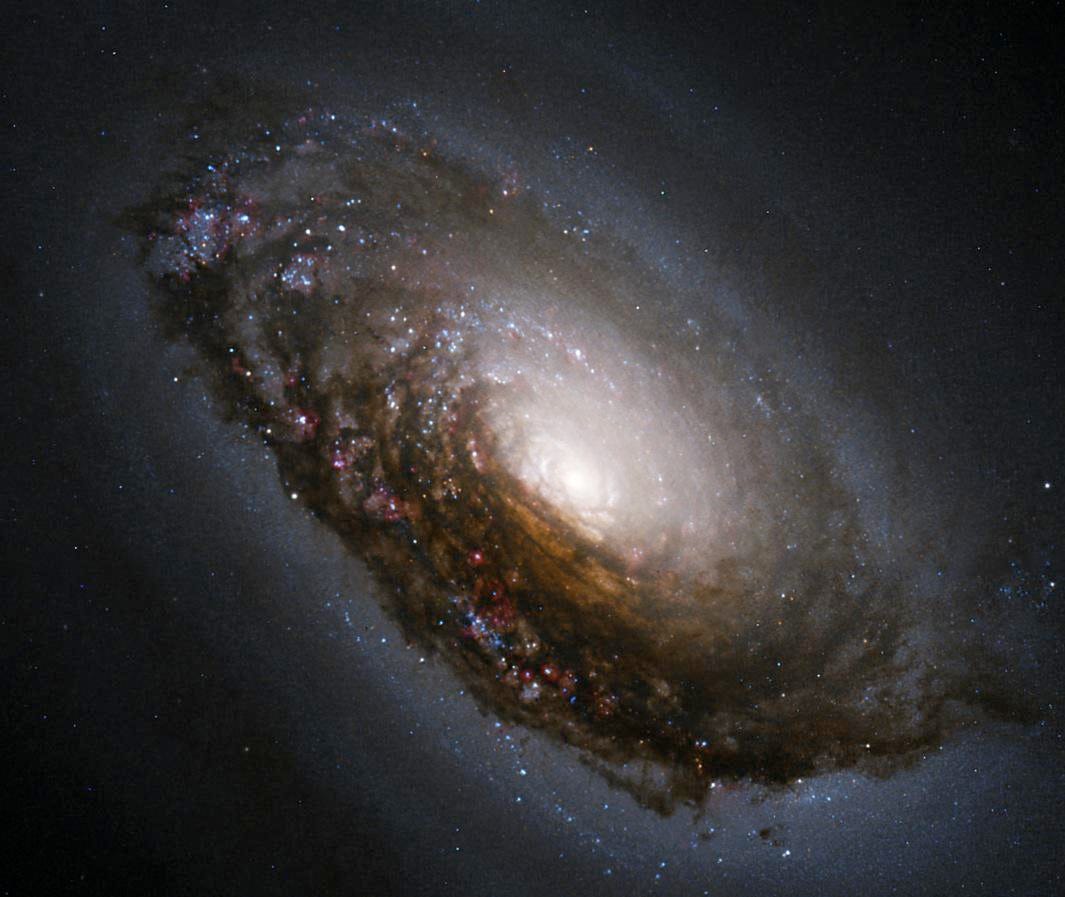Scientists have discovered the galaxy COS-87259 in the early Universe. At its center is a black hole, rapidly growing, but this process is hidden from us by clouds of dust. The rate of star formation in this star system is 1000 times higher than that of the Milky Way.

Black hole in the early Universe
Astronomers from the universities of Texas and Arizona discovered in the early Universe a galaxy with a massive black hole in the center, characterized by amazing characteristics. The star system is characterized by an extremely high dust content.
The consequence of this is extremely high rates of star formation. The luminaries of COS-87259 are formed 1000 times more often than in the Milky Way. But even more interesting is the observation of a supermassive black hole, which is located at its center.
A huge mass of gas and dust falls on it, and the black hole, like all objects in such cases, intensively radiates energy and emits excess matter. The difference from quasars lies only in the fact that a jet moving at a speed close to light passes directly through the galaxy itself. And a huge mass of gas and dust delays most of the radiation, so COS-87259 does not shine like a beacon through the entire Universe.
New look at the evolution of the Universe
Previously, such objects were not observed in the early Universe. The new discovery is important for solving one of the most intriguing mysteries in cosmology: how did supermassive black holes manage to gain mass so quickly.
Observations showed that already in the first hundreds of millions of years there were supermassive black holes in the Universe, heavier than millions of suns, although there was not enough time for their formation. To explain this paradox, scientists have come up with many theories, including the direct collapse of these objects from giant clouds of gas.
We also saw the galaxy COS-87259 as it was 750 million years after the Big Bang. But the giant pile of dust that falls on it perfectly explains why we could incorrectly estimate the growth rate of black holes at the beginning of the Universe.
The most interesting thing about this discovery was that it was made almost immediately in a section of the sky that had already been repeatedly used to explore the young Universe. This means that such objects were extremely common at that time. It’s just that we still don’t see them because of the dimness.
According to phys.org
Follow us on Twitter to get the most interesting space news in time
https://twitter.com/ust_magazine

